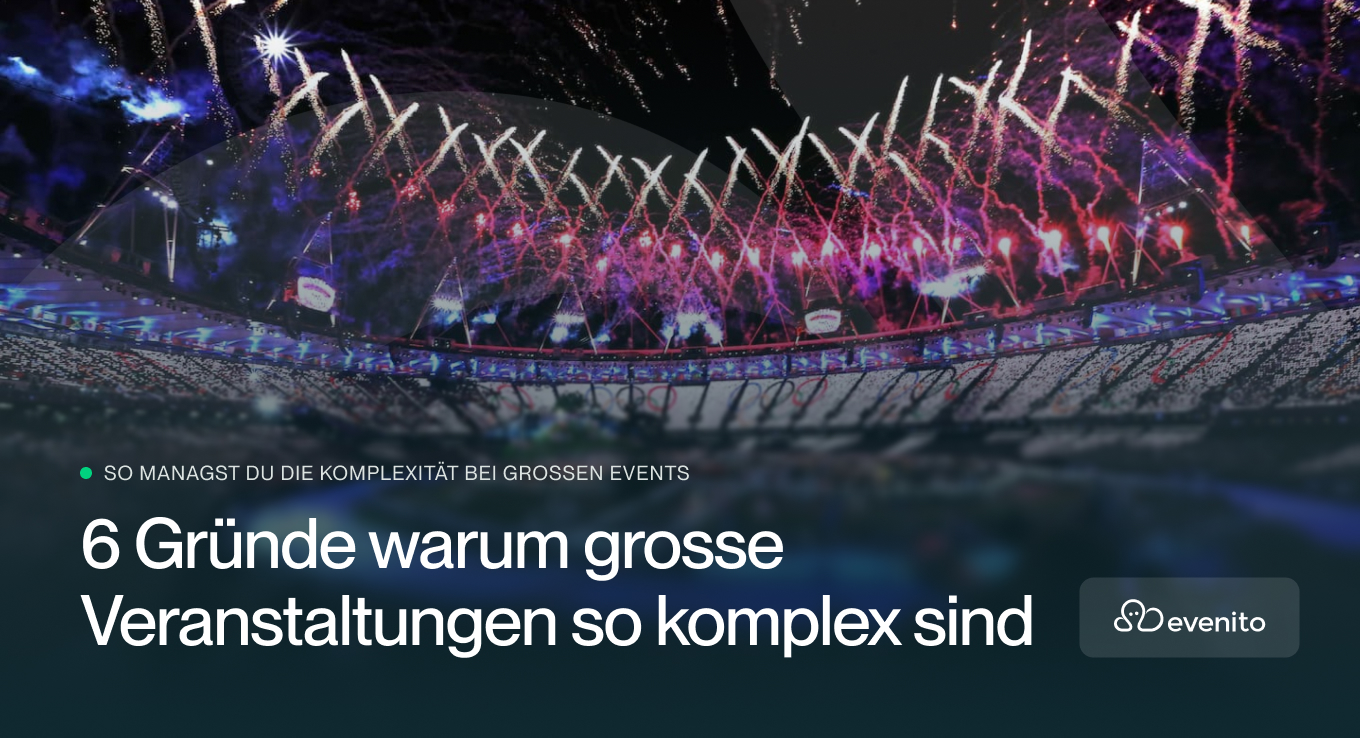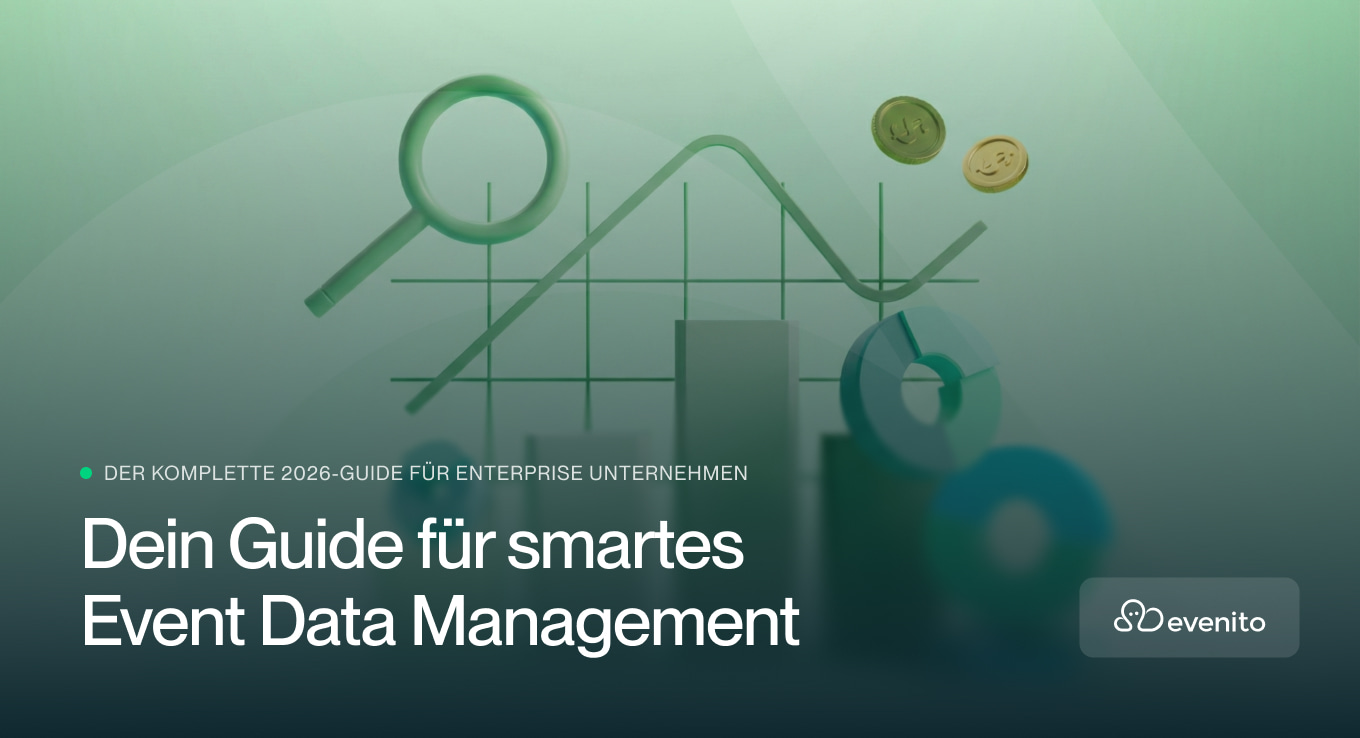Maximising participant engagement through technology
When participants are highly engaged, your B2B event becomes a resounding success. For organisers, that means creating an immersive experience where attendees naturally become a part of the event.
Modern technology plays a crucial role in achieving this level of participant engagement. Effective measures to maximise participant engagement start long before the event, during the planning phase, and before participant registration has even taken place. Of course, after your event has ended, you can also take steps to keep engagement levels high, laying the foundation for the success of future events.Below, we will explore how you can use technology to enhance participant engagement before, during, and after your B2B events.
Before the event: Preparation phase
Basic questions about your events should be answered at the beginning of the event planning process, for example:
- What topics should be covered at the conference?
- Should networking or knowledge sharing be the focus?
- What venues are particularly suitable for the event?
Another crucial question should supplement this catalogue of questions:
How can you increase participant engagement at your event, and what technology can support you in doing so?
If you look for answers to this question early on in the preparation phase, it tends to be easier to take the relevant measures into account and implement them in further planning stages. Specifically, you can start thinking about how to boost participant engagement as early as the registration phase of your event.

Before the event: Registration and ticket purchasing
The registration process for your event is the perfect opportunity to offer participants an immersive experience right from the start.
To achieve this, you can utilise modern technology, such as event management software, which allows you to create a high-quality website for your event with an easy-to-use drag-and-drop editor, all without any programming knowledge.
Potential participants can find more information about the event on this website before buying a ticket. Information on topics and speakers is especially relevant.
At the same time, you can provide opportunities for interaction directly on your website:
- Create surveys on your website so users can vote on specific themes and speakers they find interesting.
- A survey about the event venue is also possible: Do participants prefer a conference hall or a cosier setting with smaller rooms?
- Ask participants about their goals: Do they want to network and gain contacts in their branch or is their focus on gaining technical knowledge?
You can integrate surveys like this directly into the registration process for your event, for example with a small questionnaire when purchasing tickets. You can also make it easier for guests to provide feedback by using multiple-choice questions.
The participant feedback can then be used to tailor your event to the interests of your audience, for example, when it comes to planning topics for presentations and discussions.
Before the event: Participant communication
Between registration and the start of the event, there are other opportunities to get into contact with your participants, increase their interest, and build anticipation for the event. This helps to decrease the amount of no-shows.
Plus, with help from suitable technology, participants can also network with each other before the event takes place. This allows them to search specifically for relevant contacts they would like to meet with at the actual event.
Email marketing: Email marketing plays a key role in participant communication. In this case, email marketing software, which can be found in many event management programmes, is recommended. Emails are also the perfect way to send links to participants for things such as webinars and networking forums.
Using modern email marketing software also has an additional advantage: By collecting participant information, you have the option to separate your guests into segments and only send emails to users for whom a particular topic is relevant.
Webinars: A webinar is also a great opportunity to provide event participants with detailed information before the event. A live webinar is also perfect for a Q&A session, where guests can ask questions on event content and organisation.
Exchange through forums, social media groups, and event apps: It is often practical to offer networking opportunities to participants before the event begins, allowing them to discuss topics in advance. Social media groups are a simple option for this. You can send the link to the group through an email. When using social media platforms, however, be sure to pay attention to applicable legal regulations on data protection.
Forums and dedicated event apps are also a great way to increase participant engagement and allow for networking opportunities before your B2B event begins.

During the event: Interactive technology
With interactive technology, you have numerous options to maximise participant engagement during your B2B event.
Event apps: A modern, designated event app can play a key role in increasing attendee engagement.
An event app can have various functions:
- Registration at the entrance
- Check-in for individual sessions
- Opportunities for networking and establishing contact with other participants
- Push notifications for personal recommendations based on participants’ interests
Gamification: Often underestimated, integrating gaming elements through technology can also increase participant engagement. For example, users can receive points when they create a schedule in the event app or on the website, or when they connect with other attendees. For B2B events, however, these elements should only be implemented on a small scale.
Chatbots: Advancements in artificial intelligence have made it possible for chatbots to answer many recurring questions from users. Automated interaction with a chatbot integrated into the event website or app allows visitors to receive immediate answers to their questions. However, chatbots need to be set up correctly to ensure they can actually answer frequently asked questions.
Augmented reality (AR) and virtual reality (VR): Compared to other interactive technologies, AR and VR are rarely used. With that said, they can offer exciting opportunities for B2B events.
Example: A manufacturing company can offer a tour of its production facility on the other side of the world using VR glasses.
During the event: Networking and interaction
For many B2B event participants, networking and interaction with other like-minded guests are important conference aspects. As an event organiser, it is essential to pay particular attention to this point. Several technologies can be implemented here.
Networking through the event app: With the right setup, an event app offers excellent opportunities for participants to connect.
Example: Users can create a personal profile in the app with their interests and links to their social media profiles. This allows them to search specifically for other visitors with the same interests and to network with them both in a digital space and at the event. A chat option can also be integrated into the app.
Networking on external platforms: Social media networks and forums offer an additional option for digital networking. Of course, these platforms also have their own challenges. For example, you are limited by their settings and management options. Event participants also need to create an account on an external site. In addition to the extra effort, other questions, such as data protection, need to be considered.
Networking between virtual participants and on-site visitors: Is your event also accessible to virtual participants? Thanks to modern technology, this isn’t a problem. You can even ensure in-person attendees and virtual users connect with each other, for example, through special networking sessions where on-site guests can use laptops to interact with virtual participants.
During the event: Real-time feedback and analysis
Nowadays, collecting real-time feedback at B2B events is easily achievable with modern tools. You can immediately analyse collected data and use it to improve the event while it is still going. Additionally, this data can be stored long-term, for example, in event management software, and used for analysis at a later time.
Feedback through event apps: If you use an event app at your event, it is very effective for collecting real-time feedback from participants. Your surveys will also have a high participation rate, as many users are likely to respond to push notifications from the app.
Feedback through interactive polling tools: There are also a variety of specialised polling tools available that allow you to collect real-time feedback at your event. This approach is especially fitting when you want to collect feedback on a specific session.
Example: A speaker can integrate access data for a survey directly on their presentation slides. This gives the audience quick access to the questions, for example via a QR code, and allows them to vote on which topics and questions should be answered next in the session.
Feedback through QR codes: A particularly easy way to collect real-time feedback during a B2B event is using QR codes. These can be placed anywhere, such as on tables or as flyers on chairs. A resource-efficient option is to place the QR code as a sticker in high-traffic areas, such as at a catering stand, where participants are likely to see it.
The link embedded in the QR code directs users to a form where they can leave their feedback. Both the creation of the survey and the data analysis can be effectively managed using event management software.
Feedback via social media: Social networks can also be used to collect real-time feedback at B2B events, although they typically play a smaller role compared to B2C events. One option is to use a dedicated hashtag for event communication on X (formerly Twitter).

After the event: Follow-up and analysis
Once your event is over, taking the time for a thorough follow-up is essential. The more extensive the data collected, the more insights you can gain for improving future events, and the easier it will be to boost participant engagement.
Gathering feedback: The ideal time to collect detailed feedback from participants is after the event has ended. To do so, send an email with a link to an online survey. Many participants appreciate the opportunity to share their opinions about the event.
To collect and analyse feedback in a structured way, event management software is ideal. This also allows you to send reminder emails to attendees who have not yet provided their feedback after receiving the initial email.
Data analysis: In addition to participant feedback, other data, such as no-shows (ticket holders who did not attend) and attendance numbers for individual sessions, are also crucial for event analysis. This information provides comprehensive insights into participant engagement and helps you assess how to further enhance it with the implementation of suitable technology.
After the event: Long-term engagement strategies
Particularly for recurring B2B events, it is essential to maintain participant engagement over a long period of time. It is much easier and more cost-effective to convince a one-time attendee to attend the next event than to acquire a new attendee.
Personalised follow-up communication: To ensure your guests also register for future events, it is best to maintain personal communication after the event. For example, you can send presentation documents for individual sessions, links to video recordings of presentations and discussions, and other materials, such as e-books, white papers and webinars, via email.
Networking: Organising networking opportunities after an event provides additional value for attendees. Although building a community requires some effort, it results in a lasting increase in participant engagement.
Example: Once a month, you can invite interested users to a live webinar where a specific topic is discussed. Here participants have the opportunity to network with each other.
Maximise participant engagement with technology
We have seen that modern technology plays an essential role in enhancing participant engagement at your B2B events. Effective measures can be implemented before, during, and after the event, often through the use of event management software.
With the right initiatives, you can make your B2B event a high-quality and immersive experience, maximising engagement!


.svg)



